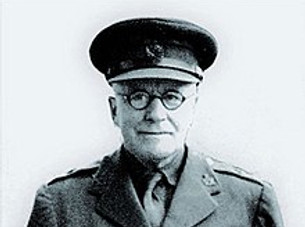-AUTHOR & HISTORIAN-
HELEN FRY
THE LONDON CAGE
Autumn 1940: The British Secret Service requisitioned three adjoining luxury mansion houses in Kensington Palace Gardens to open a clandestine unit known as The London Cage.

Located in a gated street coined Millionaires’ Row, belonging to the Crown Estate and bordering the royal Kensington Palace, it boasted one of the most exclusive and expensive residences in the capital and unlikeliest of locations to hold German prisoners-of-war.
For the neighbours – the Russian Embassy tenanted next door and the wealthy magnates living in the other mansions – there was no inkling of what was going on behind the bravura Victorian façades. Here the prisoners, who could not be broken under normal conditions of interrogation at any of the other eight ‘cages’ in Britain, were subjected to ‘special intelligence treatment’, designed to break their will to resist.
As a transit camp, the London Cage should have appeared on the wartime lists of the Red Cross. It did not – because officially it did not exist.
Its Commanding officer Colonel Alexander Scotland, a longstanding intelligence officer (rumoured to have been MI5), set the cage rules and this is where the controversy emerged. Within six months of opening, the London Cage became embroiled in an internal heated controversy over the use of violence and unorthodox methods during interrogations.

At the end of the war, the London Cage became the War Crimes Investigation Unit and the most important such centre outside Germany.
Many high ranking Nazi war criminals and SS officers passed through its doors after being hunted down by Scotland’s own specialist teams roaming Europe to bring them out of hiding.
Claims of brutality, use of torture and psychological abuse surfaced again at the London Cage – this time very publicly.

Then, in the 1950s, panic coursed through the corridors of MI5 and the Foreign Office when it was discovered that Scotland was on the verge of publishing his memoirs.
He was silenced and a censored version published in 1957.




What ended up on the cutting room floor was at least half of the manuscript, including all examples of methods of interrogation, anecdotal stories about specific prisoners, examples of conversations with prisoners, and life generally inside the cage.
Would you spill the beans under Britain's toughest interrogation methods, or would you live to tell a different story?
This book reveals the oft controversial life behind closed doors and secrets that the Intelligence Services sought to suppress for decades.

ACCREDITED REVIEWS
“… impressively forensic study, which not only throws light on an intriguing (and murky) backwater of World War II, but also on an unresolved ethical dilemma still with us today.” - Daily Mail, Book of the Week
"Intelligence professionals should read The London Cage: it is they who will be tasked to build and run future interrogation programmes, and Fry’s book offers an important historical analogue for the work."
- J.R. Seeger, CIA Studies in Intelligence
"Fascinating … Prisoners told of camouflaged factories in Poland producing planes and U-boats, provided information essential to the planning of D-Day and gave early warnings of the horrors being enacted in camps such as Buchenwald." - Nick Rennison, The Sunday Times